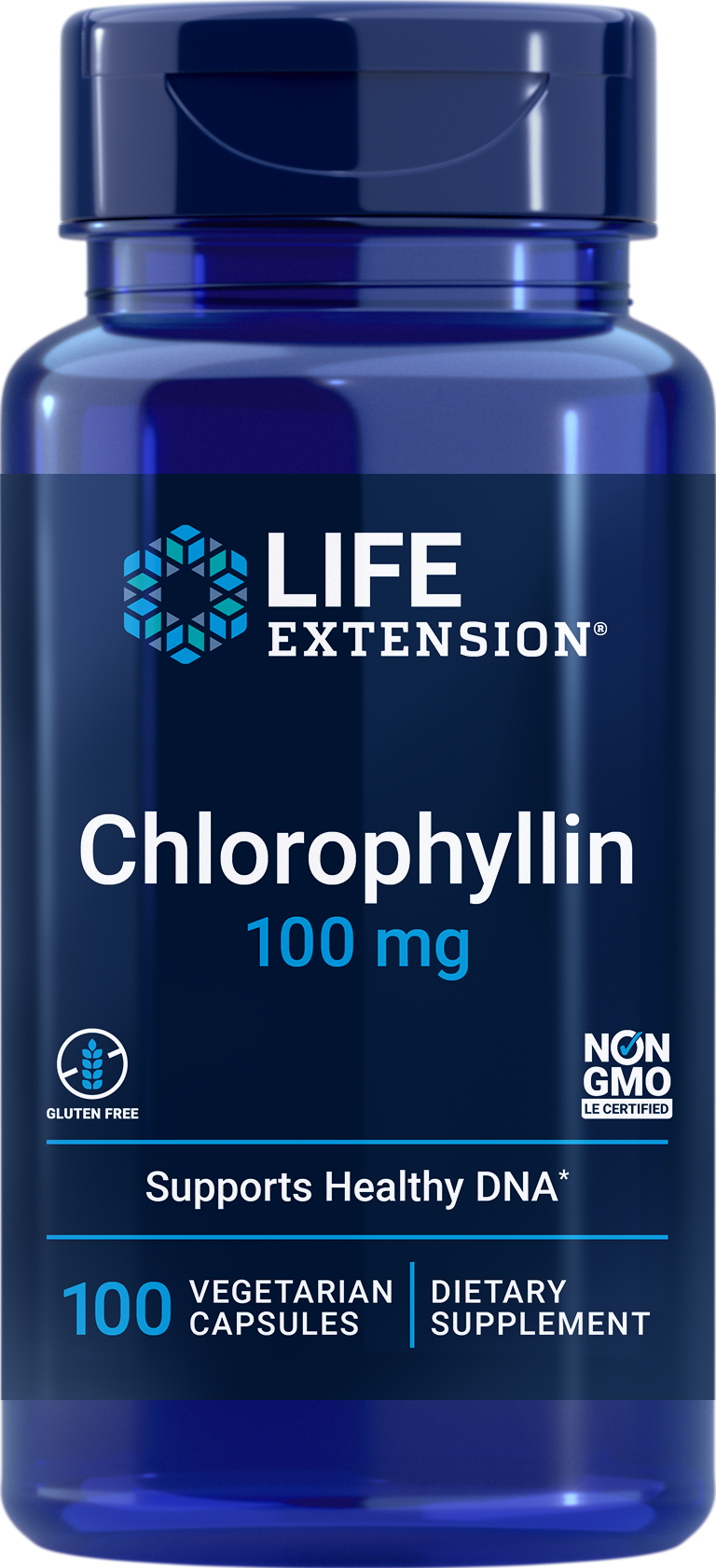Chlorophyllin
Supports DNA health
Chlorophyllin
Supports DNA health
For you, if you want to protect your DNA from foreign chemicals & support whole-body health
The formula of Chlorophyllin can:
- Promote mitochondrial health
- Help inhibit bonding of foreign chemicals to DNA
- Offer antioxidant protection by quenching major free radicals
Chlorophyllin is a compound derived from a green pigment found in plants known as chlorophyll. Research has shown that chlorophyllin has protective, antioxidant properties, helping your body support against the effects of harmful chemicals on pieces of your DNA.

on orders over € 69
We have a 100 days return policy, not the standard 30 days!
Order before 11:00 CET, for same day shipping (Mon-Fri)
We can help you in 6 languages
The DNA in every cell of your body suffers 10,000 oxidative hits per day, leading to the formation of different oxidative DNA lesions. According to human studies, lifestyle and environmental influences may profoundly affect outcomes of ageing.
Environmental toxins (e.g., cigarette smoke, coal dust, diesel emission particles) are not the only concern, though. Food cooked at high temperature cause cellular damage too. Deep-fried food, including beef steak, hamburgers and bacon, leads to the formation of gene-mutating heterocyclic amines. So-called healthy food may contain small amounts of similarly undesirable substances.
Chlorophyllin has been attested for its DNA-protective and antioxidant properties, inhibiting DNA adduction. It is also an antioxidant, helps to protect mitochondria and plays a role in preventing unavoidable dietary exposure to aflatoxin, a naturally occurring mycotoxin.
| ||||||
| ||||||
Dosage and use | ||||||
| ||||||
Warnings
A food supplement should not be used as a substitute for a varied and balanced diet and a healthy lifestyle. | ||||||
This product was added to our catalogue on June 19, 2013. | ||||||
- ACS Symp Ser Am Chem Soc. 2009;2009:147-156.
- Int J Cosmet Sci. 2015;37 Suppl 2:1-8. Toxicol Lett. 2018;298:42-52.
- Oncotarget. 2018;9(24):17181-17198.
- Subcell Biochem. 2018;90:373-424.
- Crit Rev Food Sci Nutr. 2015;55(1):82-93.
- Food Funct. 2015;6(6):1752-72.
- Br J Nutr. 2015;113(8):1301-7.
- The Journal of Nutrition. 2004;134(8):2011-2014.
- Nutr Cancer. 2015;67(2):203-11.
- Mutat Res. 1994;318(3):239-47.
- Food Technol Biotechnol. 2014;52(4):505-510.
- Zhonghua Nei Ke Za Zhi. 2012;51(6):466-70.
- Toxicology. 2000;155(1-3):63-71.
- Biochim Biophys Acta. 2000;1487(2-3):113-27.



